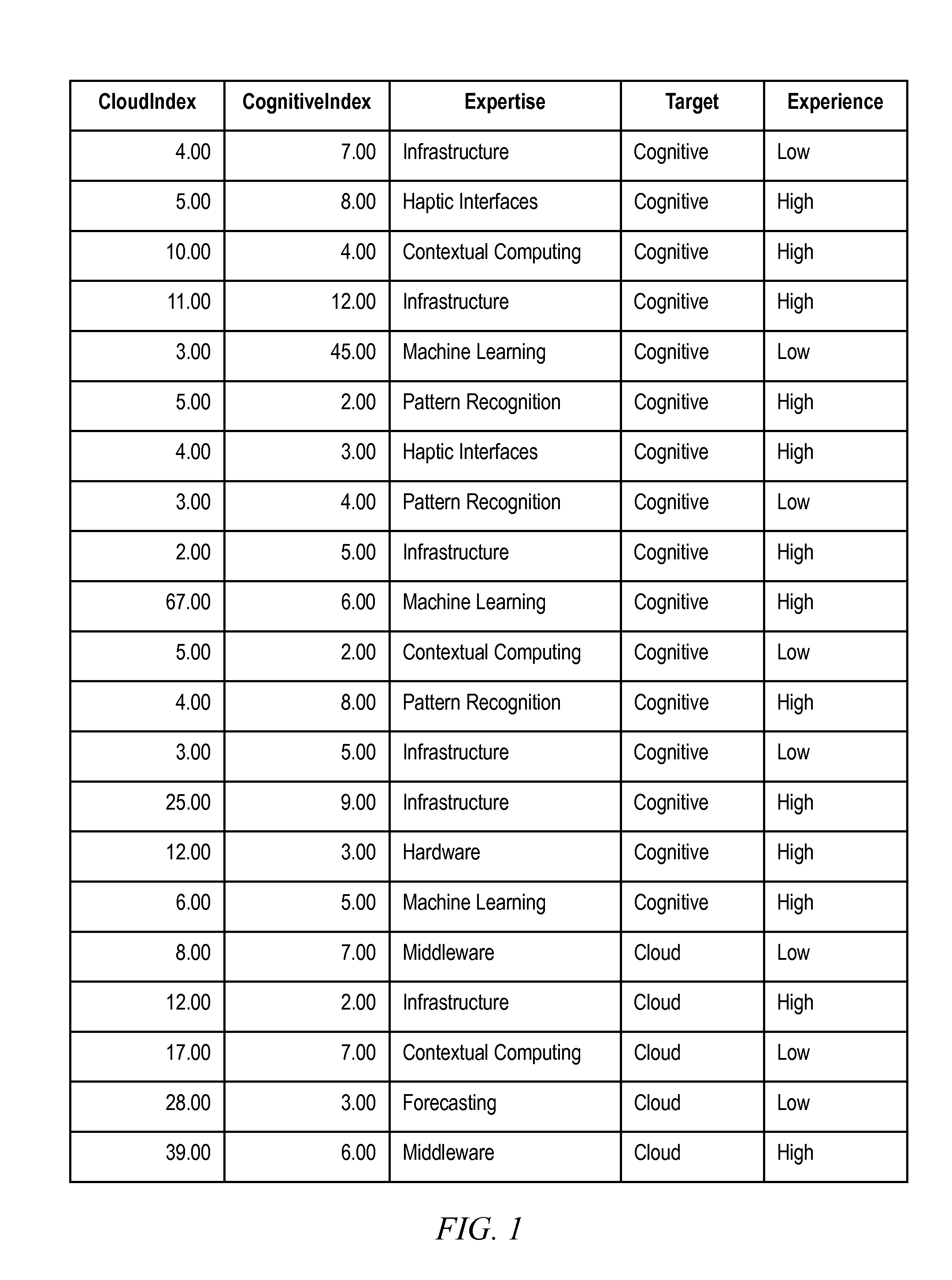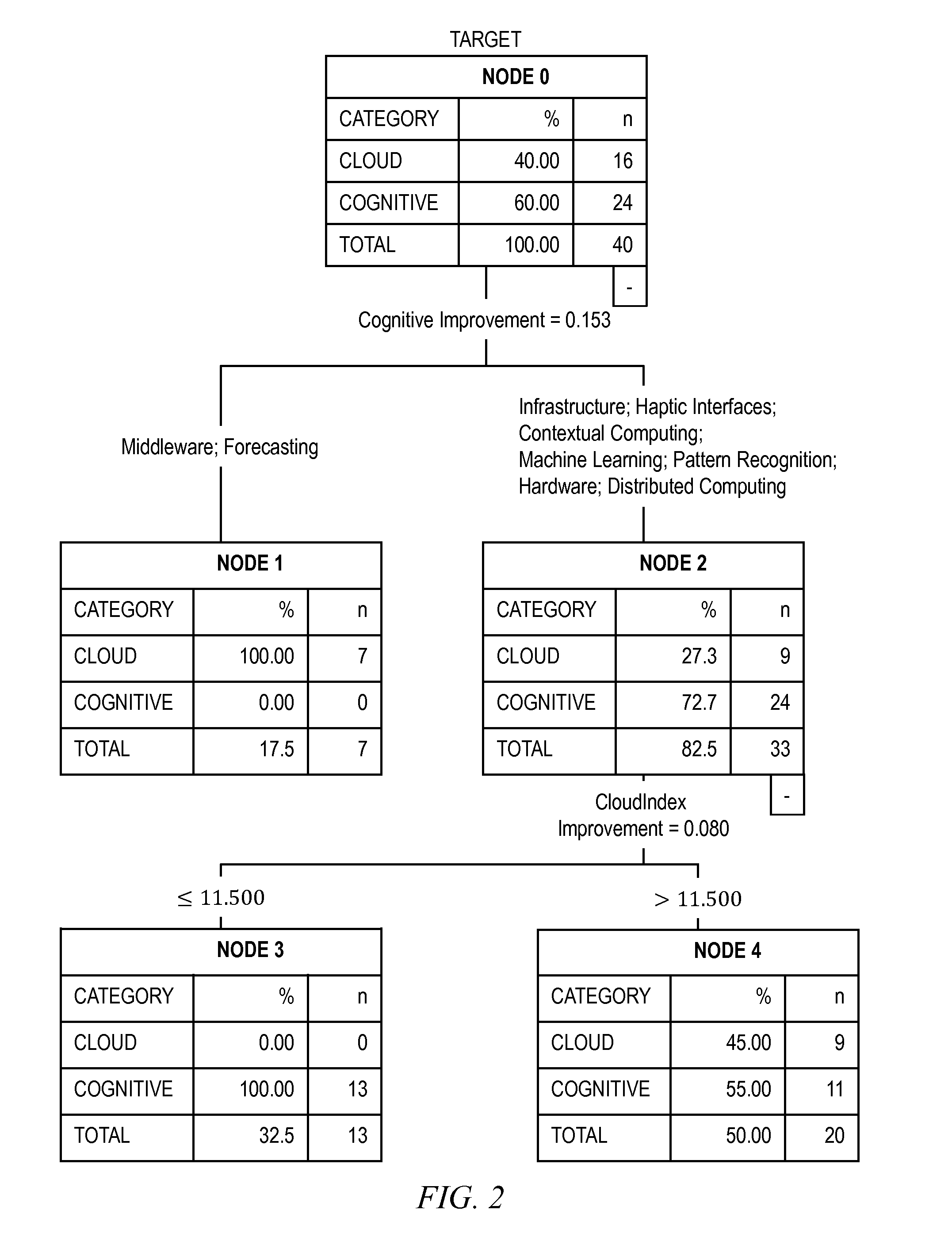Predicting outcomes from measures of group cooperation with applications in traffic alert and control
a technology of traffic alert and control and group cooperation, applied in the field of cognitive and contextual computing, can solve the problem of uncertain amount of time necessary to fully analyze data, and achieve the effect of speeding up the primary meeting
- Summary
- Abstract
- Description
- Claims
- Application Information
AI Technical Summary
Benefits of technology
Problems solved by technology
Method used
Image
Examples
Embodiment Construction
[0018]In one aspect, one or more embodiments provide a method for continually updating a projected measure of the quantity of data from a target data set that a meeting will successfully analyze. Based on this projection, a meeting may be parallelized, either by partitioning it into smaller groups, or by enlisting the help of other meetings, to finish the analysis of data in an allotted amount of time.
[0019]Often, a meeting's objectives within an enterprise will center on the analysis of a large data set in order to make a decision. These data sets may be novel, or the amount of time necessary to fully analyze the data may be uncertain given the data complexity and meeting character. Currently, there is no technique for an enterprise to automatically determine when a data set should be analyzed in parallel by multiple meetings based on a dynamically updated estimate of the quantity of data an ongoing meeting will analyze during the time allotted.
[0020]In one or more embodiments, an ...
PUM
 Login to View More
Login to View More Abstract
Description
Claims
Application Information
 Login to View More
Login to View More - R&D
- Intellectual Property
- Life Sciences
- Materials
- Tech Scout
- Unparalleled Data Quality
- Higher Quality Content
- 60% Fewer Hallucinations
Browse by: Latest US Patents, China's latest patents, Technical Efficacy Thesaurus, Application Domain, Technology Topic, Popular Technical Reports.
© 2025 PatSnap. All rights reserved.Legal|Privacy policy|Modern Slavery Act Transparency Statement|Sitemap|About US| Contact US: help@patsnap.com



